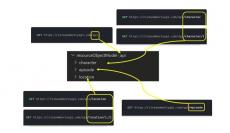- October 2023 (1)
- September 2023 (2)
- August 2023 (3)
- July 2023 (5)
- June 2023 (5)
- May 2023 (4)
- April 2023 (4)
- March 2023 (13)
- February 2023 (11)
- January 2023 (6)
- December 2022 (3)
- November 2022 (9)
- October 2022 (7)
- September 2022 (8)
- August 2022 (3)
- July 2022 (5)
- June 2022 (4)
- May 2022 (4)
- April 2022 (9)
- March 2022 (10)
- February 2022 (6)
- January 2022 (4)
- December 2021 (2)
- November 2021 (7)
- October 2021 (11)
- September 2021 (8)
- August 2021 (9)
- July 2021 (8)
- June 2021 (8)
- May 2021 (7)
- April 2021 (4)
- March 2021 (5)
- February 2021 (6)
- January 2021 (4)
- December 2020 (4)
- November 2020 (6)
- October 2020 (1)
- September 2020 (4)
- August 2020 (1)
- July 2020 (1)
- June 2020 (1)
- May 2020 (2)
- April 2020 (1)
- March 2020 (5)
- February 2020 (3)
- January 2020 (1)
- December 2019 (1)
- November 2018 (1)
- October 2018 (1)
- September 2018 (1)
- August 2018 (2)
- July 2018 (1)
- June 2018 (1)
- April 2018 (1)
- March 2018 (1)
- January 2018 (1)
- December 2017 (1)
- June 2017 (1)
- January 2017 (1)
- October 2016 (1)
- September 2016 (1)
k6 is a developer-centric, free and open-source load testing tool built for making performance testing a productive and enjoyable experience. Using k6, you'll be able to catch performance regression and problems earlier, allowing you to build resilient systems and robust applications.
Quickly build test cases to validate the performance of your APIs or microservices. Validate that your system can handle the expected volume of traffic, and catch SLA/SLO-breaking performance regressions in CI before they reach production.
Built primarily for load testing, k6 tests can with advantage be reused for performance monitoring of your APIs and microservices in production.
Features:
- Seamless scaling to the cloud: Designed to use the same test in a local, distributed or cloud environment. It provides an unified experience for various usage.
- Built for automation: Designed for automating your performance tests. Get Pass/Fail behavior on your performance goals.
- Write tests in Javascript code: Full scripting language to write realistic load tests. Reuse modules and Javascript libraries to build and maintain your test suite.
- Multiple choices for storage: k6 can output test results to various backends and formats (Grafana, DataDog, Kafka, JSON).
- Easy-to-use APIs and CLI: Designed for developers by developers. The k6 API and CLI is intuitive, flexible and powerful.
- High-performance tool: The k6 engine is written in Go making to be one of the best performing load testing tools.
The best developer experience for load testing.





















